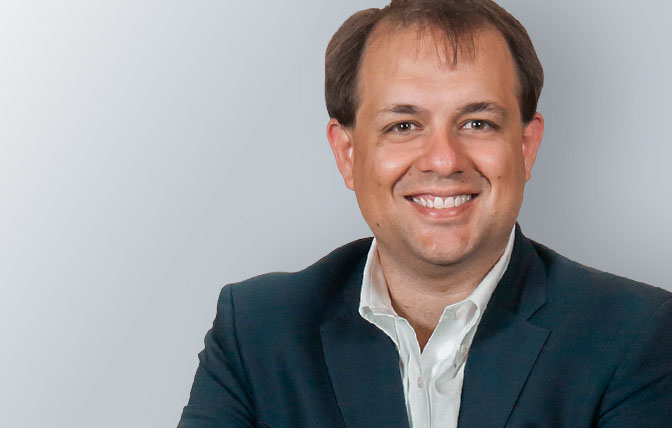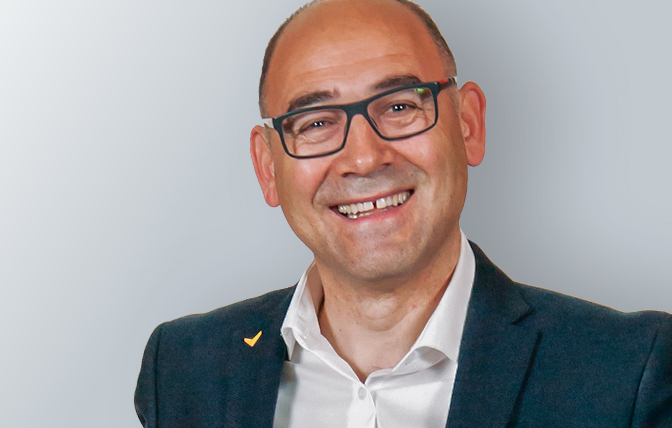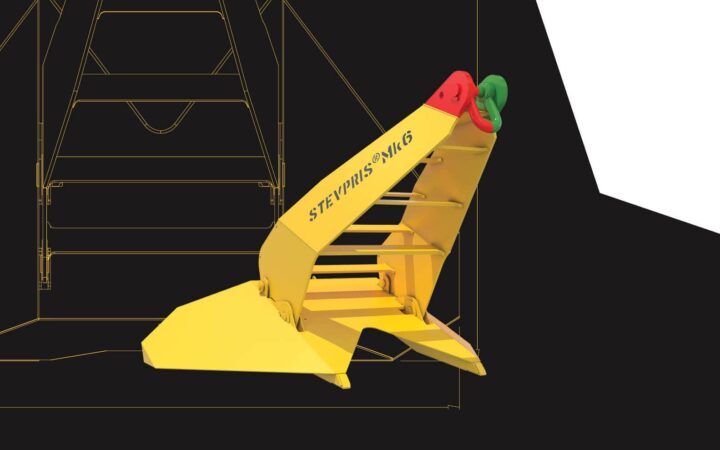Vryhof underlines the importance of a partnership in fulfilling future mooring requirements. Managing Director Leopoldo Bello has laid out his vision on the advantages of a project partnership with major EPCI contractors, based on his belief that greater collaboration will define the future of many main contractor and sub-contractor relationships in the offshore industry.
In Leopoldo Bello’s own words: “Most offshore construction providers have been hit hard by an unprecedented crisis in the oil & gas industry over the past 4 years. Engineering teams have been reduced and as a result one of the major casualties has been mooring installation expertise. Signs of life are once again emerging as we observe a slow increase in the number of tender applications for offshore engineering and construction projects. We firmly believe that working together with Vryhof as a mooring procurement and installation-capable subcontractor will definitely improve the chances of winning these challenging assignments. By combining their vessels and specific engineering capabilities with our engineering qualities and mooring expertise in a single team, innovative and cost-efficient mooring solutions can be provided.”
Another competitive advantage of cooperating with Vryhof is the company’s ability to undertake procurement and project management. Clients also praise and appreciate Vryhof’s fabulous asset integrity management programme that allows them to benefit from economies of scale. Bello continued: “Being part of Vryhof means we have a trust-based and volume-based relationship with mooring components suppliers. We keep costs down. In our case, volume not only means a better price for the end client but it also results in higher quality and quality assurance. As well as trust, there is of course also the matter of competence. When we buy chain, we know what we are buying, and when it comes to checking quality, we have our own team of experts who understand chain making.”
New market
In real terms, Vryhof has already been delivering permanent mooring systems to the oil & gas sector since the early nineteen seventies, and more recently total mooring solutions to the renewables industry. In both market segments, Vryhof has successfully completed numerous challenging assignments, and has demonstrated its capability to moor any type of floater.
In August last year, Vryhof contributed to the complete mooring system for the Kincardine Floating Wind Farm located around 15 kilometres to the southeast of Aberdeen in Scotland. In early 2019, a further agreement was signed to supply three full scope mooring systems to the WindFloat Atlantic wind farm off the coast of Portugal, the world’s first commercial floating wind farm. At the same time, Vryhof’s three businesses – Deep Sea Mooring, Vryhof Anchors and MoorLink – have announced the awarding of a series of landmark deals from the international oil & gas sector, too.
Utility sector
One sector that is revitalising its importance on the market for offshore floating terminals is the utility sector. Floating storage and regasification units (FSRUs) have proliferated since 2015, with many countries intending to switch to a cleaner and increasingly cheaper fuel than oil and coal. Power plants are under construction everywhere, in the Mediterranean, South East Asia, Australia, India, the Middle East and West Africa. In certain instances, however, onshore power plants are planned to be built fairly close to the sea. In these cases, the process of LNG redemption can be carried out offshore, on board a permanently moored floating storage and regasification unit.
LNG receiving terminals that use FSRUs can be installed at a lower cost and fabricated within a shorter period than conventional onshore receiving terminals and are viewed as an effective means of building LNG receiving capacity in emerging countries. They represent huge advantages over an onshore import terminal. The remaining challenge for the electricity company is: how do we set up a mooring arrangement for the FSRU? Engineering companies with knowledge of civil engineering work on land can propose an expensive existing mooring system; on the other hand, the FSRU owner can opt to enter into a project partnership with a mooring system supplier such as Vryhof, for the delivery and certification of a customised anchoring and mooring solution.
Vryhof’s Project Director Senol Ozmutlu commented: “More and more offshore operators and major contractors are opting for our cost-efficient mooring solutions, and we are delighted that the young FSRU industry is embracing our innovative and comprehensive mooring solutions, as well. Vryhof was in fact the first mooring specialist to operate in the utility market, and to date we have completed the majority of FSRU projects, worldwide. The awarding of so many projects demonstrates our leading position in the international mooring industry. By engaging Vryhof at an early stage of a project, we are able to help energy companies improve their project economics considerably.”
Storm Mooring System in Malta
The Republic of Malta, located in the Mediterranean Sea, has traditionally been reliant on diesel and heavy fuel oil for its power generation; these facilities no longer satisfy present-day European environmental legislation and provide power in an inefficient and expensive manner. To address the environmental requirements and to create a more efficient and better-value power supply, a liquid-natural-gas-to-power project was developed by ElectroGas Malta Consortium (EGM) as a significant contribution to Malta’s future energy strategy.
The project consists of the construction of a new 205MW Siemens combined cycle gas turbine power station, known as Delimara 4. Another part of the project is the conversion of an LNG tanker into a floating storage unit FSU to be permanently berthed near shore, close to the fishing village of Marsaxlokk. The FSU delivers liquefied natural gas (LNG) via a newly constructed jetty, for onshore regasification. As part of this project, EGM needed a Storm Mooring System to keep the FSU safe and secure in the event of a heavy storm. Despite a very tight time window, Vryhof took up the challenge. Senol Ozmutlu explained: “We were given only three months to deliver a fully certified system, so we in turn challenged EGM by proposing a totally different solution, but in sufficient detail to enable them to make a quick and final decision. This included all the necessary technical details, as well as pricing information. Without a doubt, the most important benefit of our offer was the fact that thanks to our fast delivery time, EGM was able to put the power plant on stream one year sooner than expected.”
Within this project, Vryhof worked in partnership with the Norwegian subsea contractor Ocean Installer. The installation of the eight STEVPRIS® anchors proposed by Vryhof had to be undertaken in a bay area with water depths ranging from 14 to 17 metres, but with heavy marine traffic. The permitted work area was so narrow that the only way to tackle the problem was to employ Vryhof Anchors’ STEVTENSIONER®. No other installation method is as well suited to such a shallow bay location, since its design involves a vertical pull to induce more than twice the horizontal pull. Furthermore, the work area taken up by the construction support vessel Normand Pioneer was cut by as much as 75%; a decisive benefit in this particular situation.
Looking back on the collaboration with Ocean Installer and Vryhof, Catherine Halpin, Commercial Director of ElectroGas Malta said: “The successful completion of the Storm Mooring System was absolutely essential to the overall success of our entire facility. During stormy weather, we can now move the FSU away from the jetty into a safe area, with minimal obstructions.”
First ever FSRU project in Europe
Vryhof in fact completed its first FSRU mooring project in 2011, near the port of Livorno on the western coast of Tuscany, Italy. Although Malta and Livorno are both located in the Mediterranean Sea, the two projects differ considerably. The Livorno project involved a floating regasification unit that had to be moored 12 miles off the coast of Livorno, in a water depth of 120 metres, and connected to shore by a 29 km-long buried export pipeline for transferring the gas to the national distribution system. The Livorno FSRU has a storage capacity of 137,000 cubic meters of LNG and a production capacity of 3.75 billion cubic meters of natural gas per year.
The Livorno FSRU was the first LNG re-gasification unit ever moored on a turret mooring system, which relies on 6x 20-tonne Vryhof STEVPRIS®Mk6 anchors, with a design load of 430 tonnes, in combination with a STEVTENSIONER®. Senol Ozmutlu explained: “Livorno is a typical example of the benefits of the Stevtensioner system. In this instance, with a 6-line mooring system, we simultaneously tensioned two anchors opposite each other, effectively cutting the actual installation time by a subsea support vessel in half, and in total saving 3 days. The related cost savings were between 30 and 40%, very substantial, by anyone’s standard.”
All in all, the installation of the anchors in the soft clay seabed soil including the tensioning operations took just 6 days.
Two FSRU's in the Bay of Bengal
In August 2018, Excelerate Energy Bangladesh completed the commissioning of its Moheshkhali Floating LNG (MLNG) terminal, the first LNG import facility in Bangladesh. The new terminal will enable Petrobangla, the state-owned Bangladesh Oil, Gas & Mineral Corporation, to procure enough LNG to increase natural supply to the country by 20 percent.
Vryhof successfully supplied the hold back anchors essential for the operation in a situation where demanding sea conditions and monsoon weather patterns can present unique challenges.
Shortly afterwards, Petrobangla developed a similar FSRU project to support the nation’s goal of achieving 17 MTPA of gas imports, by 2030. Summit LNG Terminal is currently developing an LNG receiving terminal that will also make use of an FSRU. Construction work on the terminal, located only six kilometres off Moheshkali Island, was started at the end of 2017, and commercial operations are expected to begin in Q3 2019. Vryhof has supplied similar hold back anchors for this second FSRU.
Trusted provider
Vryhof’s ambition is to become the trusted partner for installers and designers responsible for developing cost-efficient, robust mooring solutions for the international oil and gas industry, the renewables industry, ports and terminals and for large-scale fish farms. With its technology and capabilities, the company is able to provide total mooring solutions. Bello concluded: “We do not only supply equipment; we provide solutions. Vryhof with its combined capabilities is used to working for super majors. Certainly following the merger between Vryhof Anchors and Deep Sea Mooring several years ago, we have succeeded in leveraging our capabilities and have become bigger and stronger. In doing so we have strengthened our leading position as a one-stop shop that combines mooring solutions with the supply of equipment, services and logistics. By making use of these capabilities, designers and installation contractors can stand out from the crowd. Vryhof is the ideal partner for attracting lump sum contracts on capital projects in which mooring plays an important role!”







